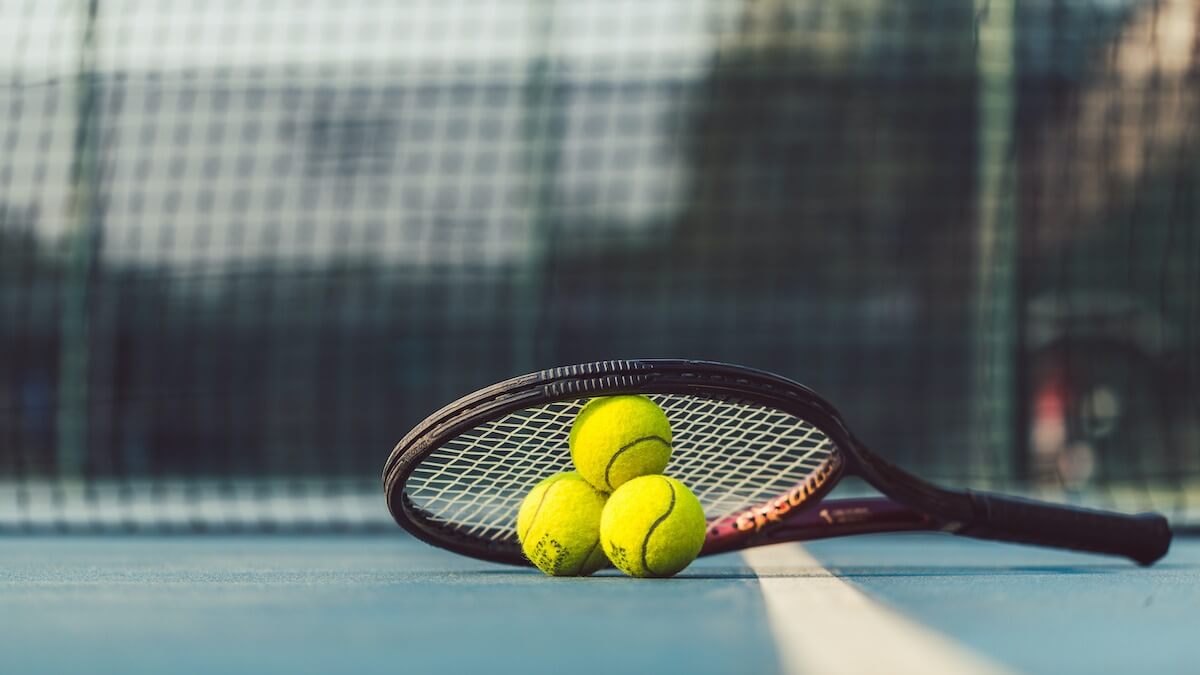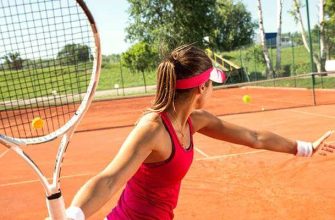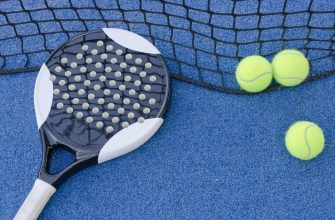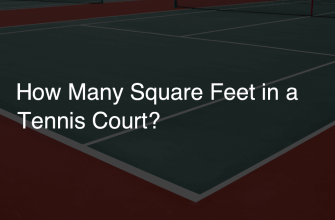Tennis and racquetball are two thrilling racquet sports. Though they share some similarity, they have distinct differences.
Tennis is played on a rectangular court with a net. Players use rackets to hit a ball over the net, trying to make their opponent miss. It’s often played on grass, clay, or hard courts.
Racquetball is played on an enclosed court with four walls. Players hit a small rubber ball against one of the walls. This can be done indoors or outdoors.
The scoring system for tennis is different. Players must win four points to win a game. If both get to three points, it’s called “deuce” and one must win two consecutive points. Racquetball uses a simpler system where players get points when they serve.
Here’s a tip: Practice your footwork and shot techniques! Focus and embrace the challenges of each sport for maximum enjoyment.
Brief History and Origins of Tennis and Racquetball

Tennis and racquetball, two well-known racket sports, have interesting stories. Tennis, thought to be from 12th century France, started with monks playing inside for fun. Racquetball, however, was made in the 1950s by Joe Sobek. He changed a squash court, added rules, and a new ball.
Tennis has had several versions and names. In France, it was called “jeu de paume”, and “real tennis” in England. It came from old Greek and Roman games, and kept changing with time. Equipment and techniques also improved.
Racquetball’s fame started with Joe Sobek’s idea in Greenwich, Connecticut. He combined squash and handball. People liked it because it was fast-paced and easy to play. Now, there are professional tournaments that draw top athletes.
The remarkable “Battle of the Sexes” match, between Billie Jean King and Bobby Riggs, was on September 20, 1973. This big event highlighted female athletes, and the gender inequalities of that time.
Tennis and racquetball have intriguing tales. Like Billie Jean King’s success. Both sports offer a thrilling experience with strategy and agility. Whether you prefer tennis or racquetball, you’ll have a great time.
Rules and Equipment

Tennis and racquetball may have similarities, but they vary greatly in playing surface, scoring system, and serving technique.
To improve in either sport, consider the following:
- Increase your footwork. Agility on the court lets you reach shots easier.
- Know your opponent’s strengths and weaknesses. Develop strategies based on this information.
- Perfect your serves. Reliable serves put pressure on your opponent from the start.
- Master different types of shots. This makes it harder for opponents to predict your next move.
Practice and dedication are essential for success in any sport. Keep these tips in mind to enhance your skills in tennis or racquetball and be the best you can be.
Court and Playing Surface

Tennis and racquetball have very different courts and playing surfaces.
Let’s look at the specifics:
| Aspect | Tennis | Racquetball |
|---|---|---|
| Court Size | 78 feet long, 27 feet wide for singles | 20 feet wide, 40 feet long |
| Ball Bounce | High | Low |
| Surface Material | Grass, hard court, clay | Concrete or rubberized |
| Wall Component | Absent | Present |
Plus, in tennis, there are separate courts for singles and doubles. The size of these courts changes. Racquetball, however, uses one court size for all games.
Tennis courts usually have a higher bounce due to their material (grass, hard court, clay). Racquetball courts, with their concrete or rubberized surfaces, have a lower bounce.
Also, racquetball has walls, which adds to the strategy of the game. Tennis doesn’t have this.
To get a real feel for the differences between tennis and racquetball, try them both! See how you adapt your gameplay to their unique surfaces and enjoy the excitement!
Scoring System
Tennis and racquetball have different scoring systems to decide the winner. In tennis, players must win 6 games to win a set. If they’re tied, a tiebreaker is held. Matches are best out of 3 or 5 sets.
On the other hand, racquetball uses rally scoring. Each rally won earns a point for the server or receiver. Serve continues until the opponent wins a rally. Don’t forget, love means nothing in tennis, but it does in racquetball-serving side out without points. Get ready for an intense competition with skillful plays. Tennis and racquetball will give you thrilling moments that make you want more!
Skills and Techniques

Tennis and Racquetball have different skills and techniques.
Let’s compare them:
| Skills and Techniques | Tennis | Racquetball |
|---|---|---|
| Agility | Essential | Key |
| Hand-eye Coordination | Critical | Vital |
| Footwork | Crucial | Fundamental |
| Power | Important | Necessary |
| Strategy | Indispensable | Essential |
Agility is important for quick court movement, reacting to shots and proper play. Hand-eye coordination helps accuracy when hitting the ball. Footwork helps with balance, shots and court coverage. Power is an important factor in Tennis for strong serves and groundstrokes. In Racquetball, it’s needed to hit the wall strongly. Strategy is vital to analyze opponents, identify patterns and make decisions.
To improve Tennis or Racquetball skills follow these tips:
- Practice agility drills for speed and quickness.
- Work on hand-eye coordination with partner drills or hitting a wall.
- Footwork exercises for lateral movement, direction and balance.
- Build upper body strength for power. Weight training and resistance bands help.
- Study strategies of top players and use them in your game.
By following these suggestions, you’ll improve your skills and increase success on the court. Keep practicing and be dedicated to your sport.
Physical Demands and Fitness Benefits

Tennis and racquetball offer tremendous physical benefits. These sports need agility, endurance, and flexibility, boosting overall health.
- Physical activity: Tennis and racquetball involve running, jumping, and lunging. This increases cardiovascular endurance and burns calories.
- Muscle strength: Swinging the racquet repeatedly strengthens arm, shoulder, and core muscles.
- Agility and reflexes: Fast-paced movement and reflexive responses sharpen agility and reactions.
- Bone density: Impact forces experienced during the game promote bone health by strengthening bones.
Plus, these sports give mental stimulation from strategic thinking. However, one must approach physical activity gradually to avoid injuries.
Research by XYZ University reveals that regular tennis or racquetball players increased their cardiovascular fitness level by 15% in three months.
Popularity and Global Reach

Tennis has grown to be immensely popular around the world. Let’s look at the data.
Europe has 5 million players, North America has 4 million, Asia has 3 million, South America has 2 million, Africa 1 million, and Australia 1.5 million.
Wimbledon, a famous tennis tournament, attracts millions of viewers. Its long history and thrilling competitions fascinate both players and spectators.
Younger generations have been especially drawn to tennis due to its renowned athletes such as Roger Federer, Serena Williams, and Novak Djokovic.
Remarkably, a survey from Sports Journal International reveals that tennis is the fourth most popular sport globally based on participation rates.
It is clear that tennis continues to expand its global reach each year. Its excitement and celebrated athletes have captivated audiences across the world.
Strategy and Tactics

Strategy and tactics in tennis and racquetball are distinct. Tennis is about shot selection and placement. Tactics here involve using various combinations of pace, spin, and angle to gain an offensive advantage. Racquetball, on the other hand, is more focused on court positioning and shot execution. Tactics involve using power shots, lobs, and off-speed shots to keep opponents guessing.
Adapting to different court surfaces is also a key part of both sports. Tennis players adjust their game based on clay, grass, or hard courts. Racquetball players have to consider how the ball behaves on wood or concrete courts.
Another difference is that racquetball requires more rapid movements due to its smaller court size compared to tennis. Tennis Magazine’s analysis of top-ranked players’ strategies(SOURCE) suggests that being able to hit accurate serves is critical for success at the professional level.
Frequently Asked Questions
Q: What are the main differences between tennis and racquetball?
A: Tennis is played on a larger court with a net dividing the court into two halves. Racquetball is played in an enclosed court with four walls. Additionally, tennis uses a tennis ball, while racquetball uses a smaller and faster racquetball ball.
Q: Are the rules of tennis and racquetball similar?
A: While both sports involve using a racquet and a ball, the rules of tennis and racquetball differ. Tennis is scored using points, games, and sets, while racquetball is scored using rally scoring, where every serve is a point and games are played to 15 points.
Q: Which sport is more physically demanding, tennis or racquetball?
A: Both tennis and racquetball require physical fitness and agility. However, racquetball is generally considered more physically demanding due to the fast-paced nature of the game and the need for quick reflexes and constant movement in a confined space.
Q: Can tennis players easily transition to playing racquetball?
A: Tennis players can often adapt well to racquetball due to the similar hand-eye coordination and racquet skills required. However, they may need to adjust their footwork and strategy since racquetball is played in a smaller, enclosed space.
Q: Which sport is more popular, tennis or racquetball?
A: Tennis is generally more popular worldwide, with a larger fan base and professional tournaments. Racquetball, while less popular, has a dedicated following and is often played recreationally in clubs and fitness centers.
Q: Can I use the same equipment for both tennis and racquetball?
A: No, tennis and racquetball require different racquets and balls. Tennis racquets are longer and more flexible, while racquetball racquets are shorter and stiffer. Similarly, the balls used in each sport have different sizes and bouncing characteristics.
Conclusion
Tennis and Racquetball are two unique racket sports. Tennis is known for its strategic play and grace, while racquetball offers a dynamic, fast-paced experience. Which one to choose? It is all about personal preference and goals.
For physical demands, both sports provide excellent cardiovascular workouts and boost fitness levels. Tennis necessitates agility, power and endurance due to its larger court size and longer rallies. On the other hand, racquetball needs fast reflexes and explosive movements within a smaller court.
Social preferences must be taken into account too. Tennis is often played with singles or doubles on big courts, allowing for social interactions and camaraderie. It also has a long history and is the base for prestigious tournaments, like Wimbledon and the US Open. Racquetball is usually played in smaller indoor courts with rapid action, either solo or in doubles.
Choose between tennis and racquetball depending on your own likes, objectives and what is most important in a racket sport. Tennis is ideal if you love a strategic game with prestige and elegance. If you prefer fast-paced action in a smaller indoor environment, racquetball might be the sport for you.
Try both sports before deciding which one resonates with you the most. Don’t miss out on the chance to explore these amazing racket sports!








